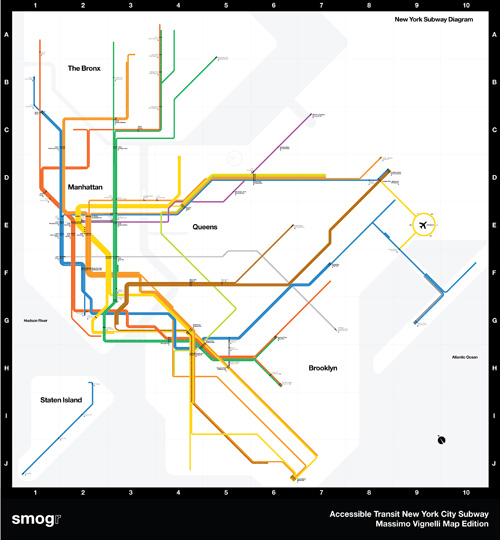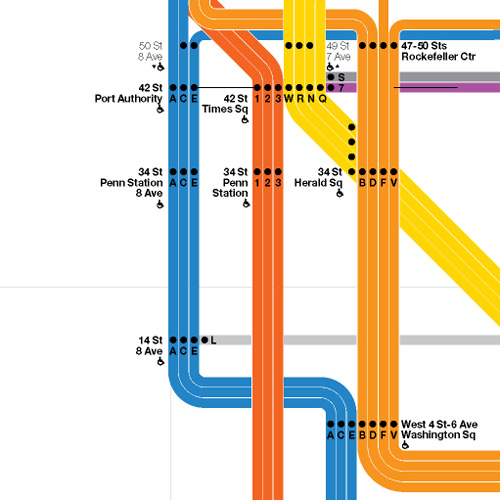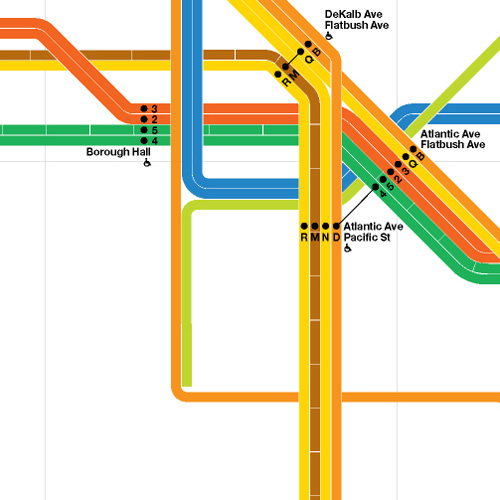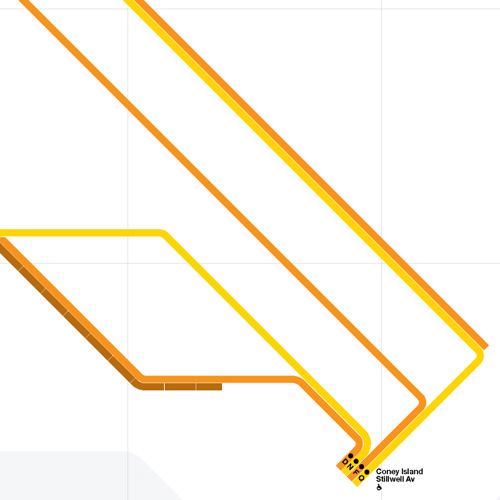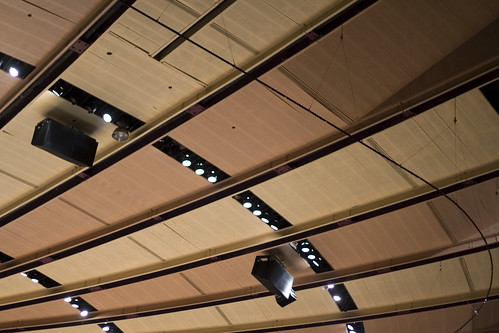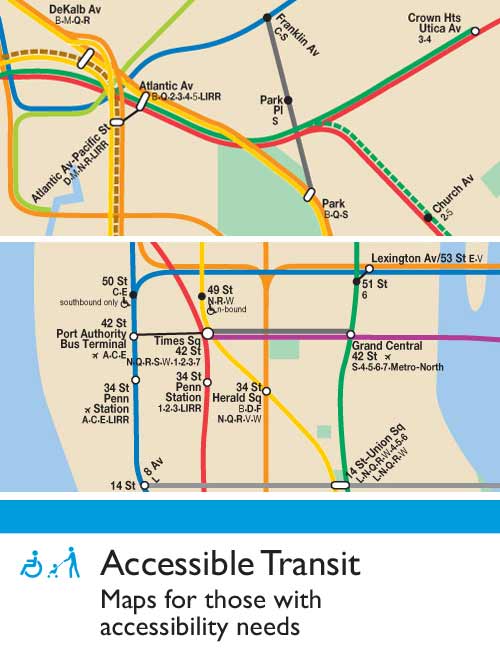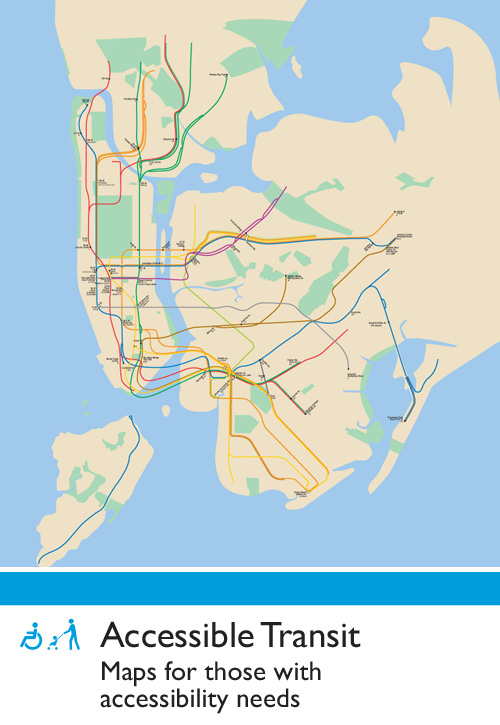This is the third installment of my Accessible Transit Map series. Intended as a replacement map for those with disabilities, this map illustrates which station stops on the New York City Transit Authority’s system is accessible for those with strollers or with a disability.
This map is special: it is the updated system map by Massimo Vignelli, a design which is beautiful but which I have been a vocal critic of. For those who don’t know about Vignell’s 1972 map, read Michael Bierut’s history, Mr. Vignelli’s Map which is very well written.
As in previous maps, I have removed all stations which are not handicapped accessible. Maps represent corporeal objects, through convenient fictions; a representation which works for a majority of its users. But where are the maps for the disabled or those require additional accessibility? Wouldn’t the mother with newborn in stroller need a different map then those without the need to lug all the accoutrement’s of childhood? Equally, those in a wheelchair require a map different then one which the walking can use. I decided to rectify the situation by editing the maps of major metropolitan transportation systems, in order to create a map for those who are not represented on the official map.
Here are details of the map:
Midtown Detail
Brooklyn Detail
Coney Island Detail
From the three details shown above the system map gradually becomes more beautiful as you strip information away; as more and more stations are removed, the system becomes more diagrammatic and pure. This is the issue I have with Vignelli’s original, and update map: the subway is not an abstract diagram, no matter that the designer wishes it to be. No matter that Vignelli has created a masterpiece of design, the system will never be forced into the visual language that London’s Underground uses so successfully. As so it will be: the historical traces of over one hundred years of service, created by three different companies, will continue to bleed through time into today’s maps.
Feel free to download the map in pdf format: Accessible Transit Massimo Vignelli NYC Subway Map Edition.
Other Accessible Transit Maps for your perusal:
Please see also:
- United Nations expands Australia’s territory
- London Underground Map formatted for iPhone
- Comparing NYC & Washington DC – Area, Population, Density & Average Income
- Getting Real: Reflecting on the New Look of National Park Service Maps
- Radical Cartography: Building Heights as indirect measure of land value
- The 51st State – State of New York City
- Interstate Infrastructure
